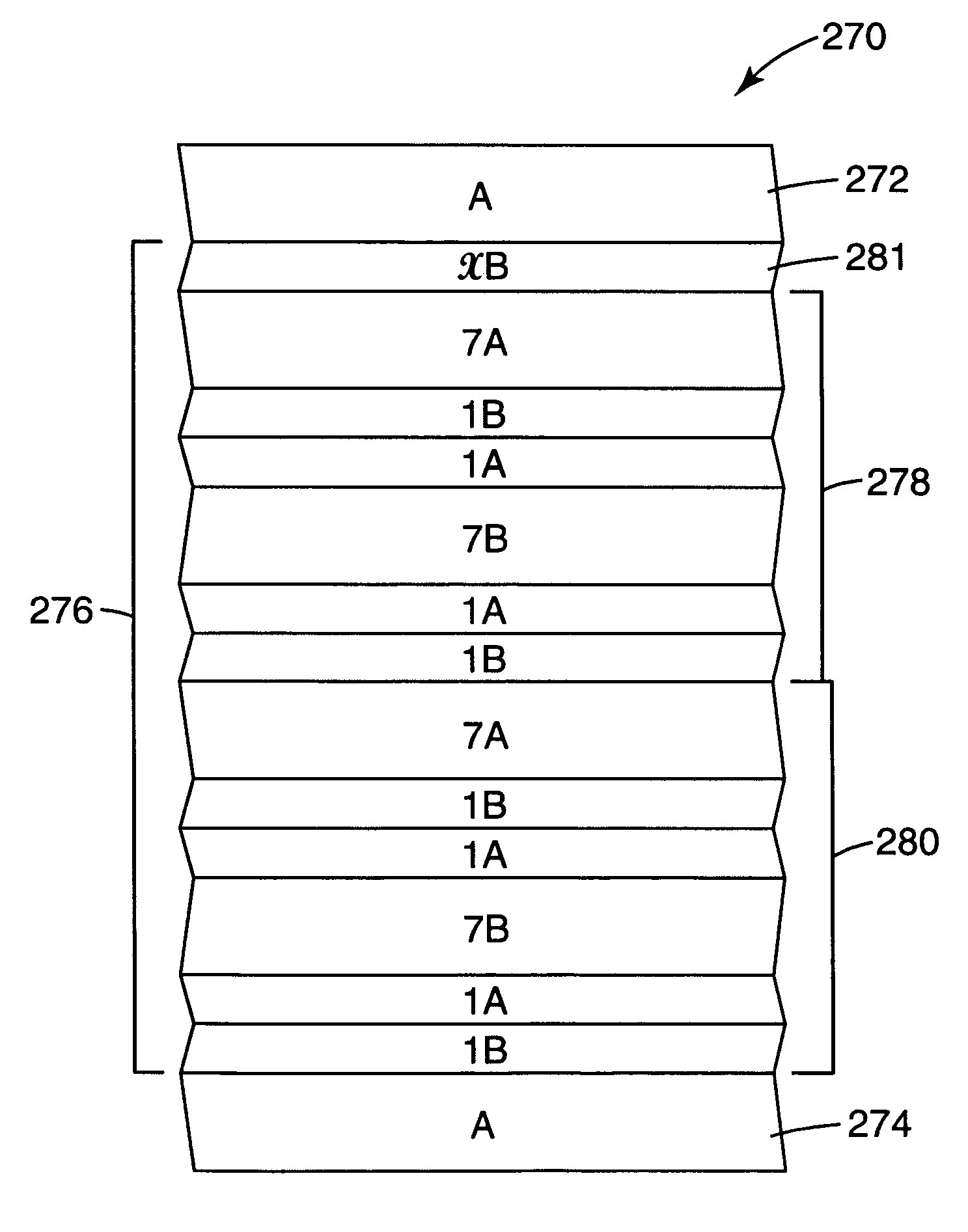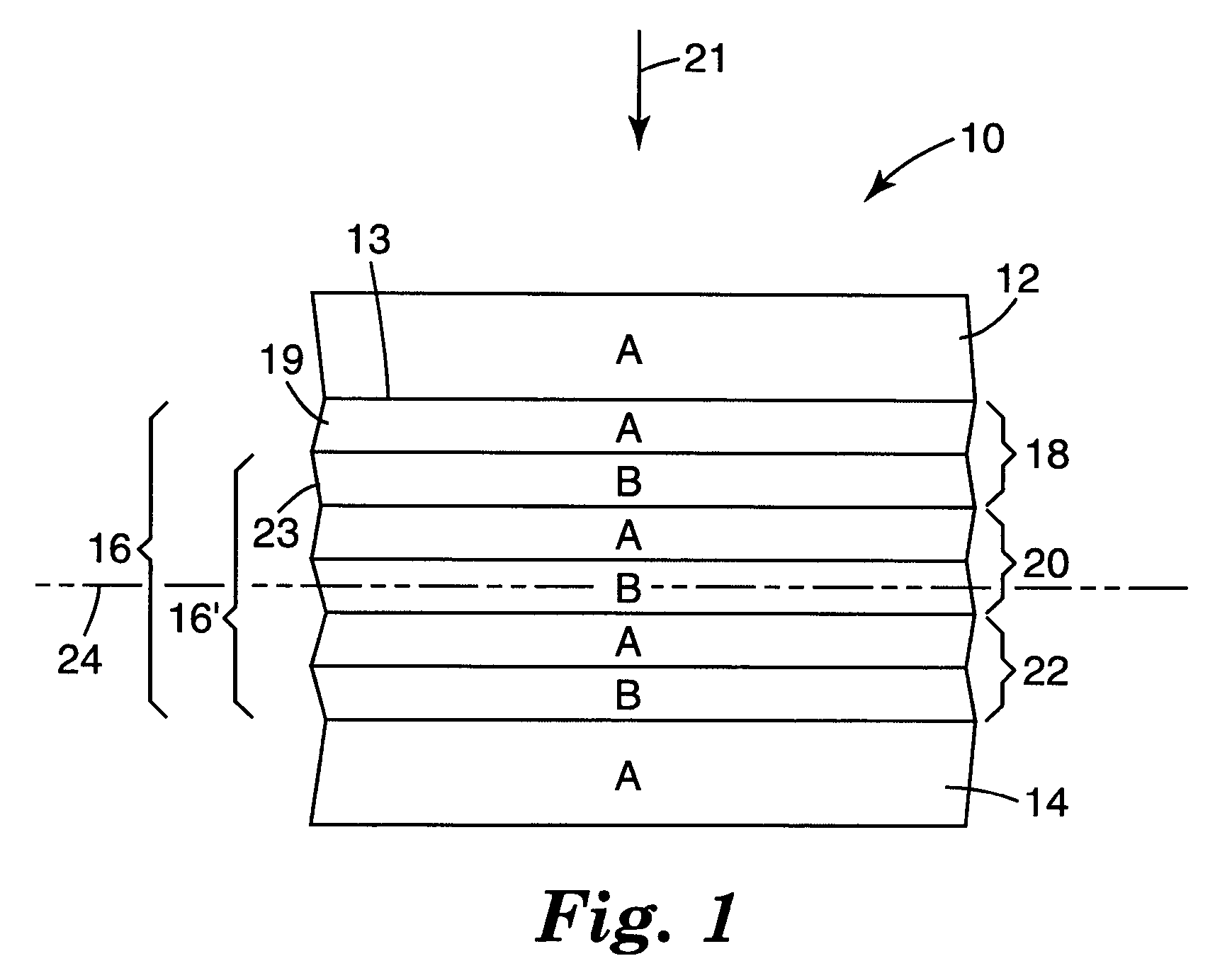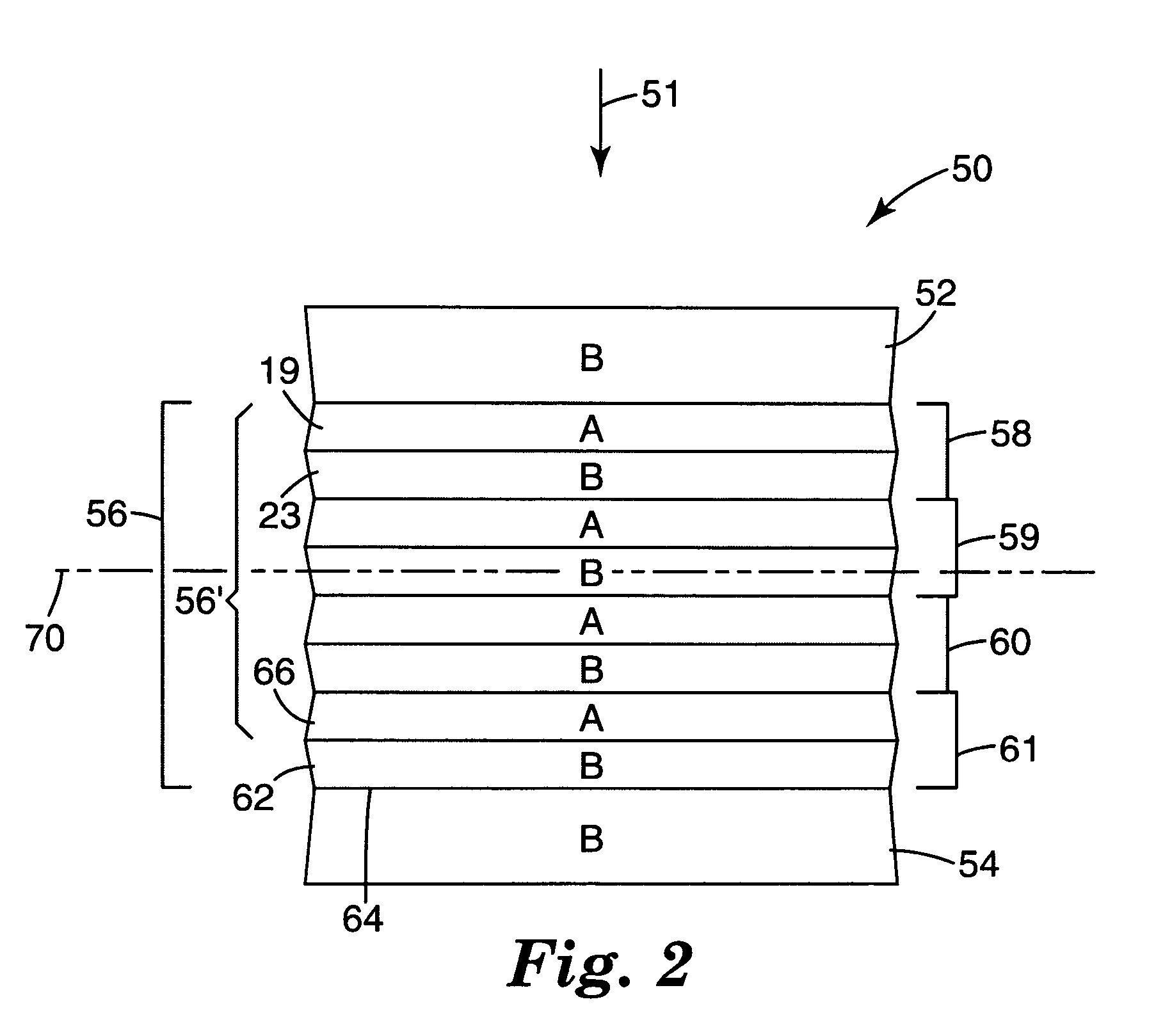Multilayer infrared reflecting film with high and smooth transmission in visible wavelength region and laminate articles made therefrom
a multi-layer, infrared technology, applied in the direction of optical elements, lighting and heating apparatuses, instruments, etc., can solve the problems of reflection spectrum, unwanted colors created by multi-layer polymeric ir reflecting film designs, unwanted variation or modulation in the visible portion of the transmission spectrum, etc., to achieve high visible light transmission and enhance performance
- Summary
- Abstract
- Description
- Claims
- Application Information
AI Technical Summary
Benefits of technology
Problems solved by technology
Method used
Image
Examples
example 1
[0119]An IR reflective multilayer film with a 711 construction was simulated via computer model so that it included unit cells with layers having optical thickness ratios of 7A1B1A7B1A1B. Skin and protective boundary layers were applied that had the same index of refraction as one of the optical layers.
[0120]In Example 1a, the film had the following layer construction:
[0121](skin / PBL_A) 7A1B1A7B1A1B . . . 7A1B1A7B1A1B (skin / PBL13 A)
[0122]In Example 1b, the film had the following layer construction:
[0123](skin / PBL_A) 7B1A1B7A1B1A . . . 7B1A1B7A1B1A (skin / PBL_A)
[0124]In both Examples 1a and 1b, the outer most A layer in the optical packet merges with skin / PBL, so the total number of layers in the effective optical packet is 6n−1, where n is the number of unit cells in the packet before merging. For these examples n was set to 32. Also, both Examples 1a and 1b used a simple linear layer thickness gradient of 1.27 (the ratio of the optical thickness of the thickest to the thinnest optic...
example 2
[0133]IR reflective multilayer IR films were modeled by adding an additional layer B with (relative) thickness x between the outer most A layer and skin / PBL of the construction in Example 1.
[0134]In Example 2a, the film had the following construction:[0135](skin / PBL_A) (xB) 7A1B1A7B1A1B . . . 7A1B1A7B1A1B (skin / PBL_A)
[0136]Example 2b, the film had the following construction:[0137](skin / PBL_A) 7B1A1B7A1B1A . . . 7B1A1B7A1B1A (xB) (skin / PBL13 A)
[0138]In either case, the total number of layers in the effective optical packet is 6n+1, where n is the number of unit cells in the packet without the extra layer. The film construction in Example 2a does not have symmetry regardless of the thickness of the xB layer. The film construction in Example 2b achieves symmetry only when x=7.
[0139]The spectra in FIG. 15 were obtained for three simulated films according to Example 2a with x=1, 7, and 20 respectively, each such film having three optical packets with 32 unit cells in each packet. The fil...
example 3
[0145]In these simulated constructions, the skin / PBL had an index of refraction different from the index of refraction of either of the materials in the optical stack.
[0146]Three cases were considered:
[0147]Example 3a: skin / PBL index>the index of the high index optical material
[0148]Example 3b: the index of the low index optical material<skin / PBL index<high index of optical material
[0149]Example 3c: skin / PBL index
[0150]The simulated spectra were obtained for each example using a 711 optical stack construction with a layer arrangement of approximately 7A1B1A7B1A1B . . . 7A1B1A7B1A1B in each of the three packets. The film was constructed as: skin / PBL (packet 1) PBL (packet 2) PBL (packet 3) skin / PBL with each packet having 32 unit cells. The high index optical material was low melt point PEN with index of refraction 1.73 (along both in-plane directions), the low index optical material was PMMA with index 1.49 (along all directions). The skin...
PUM
| Property | Measurement | Unit |
|---|---|---|
| Fraction | aaaaa | aaaaa |
| Wavelength | aaaaa | aaaaa |
| Wavelength | aaaaa | aaaaa |
Abstract
Description
Claims
Application Information
 Login to View More
Login to View More - R&D
- Intellectual Property
- Life Sciences
- Materials
- Tech Scout
- Unparalleled Data Quality
- Higher Quality Content
- 60% Fewer Hallucinations
Browse by: Latest US Patents, China's latest patents, Technical Efficacy Thesaurus, Application Domain, Technology Topic, Popular Technical Reports.
© 2025 PatSnap. All rights reserved.Legal|Privacy policy|Modern Slavery Act Transparency Statement|Sitemap|About US| Contact US: help@patsnap.com



